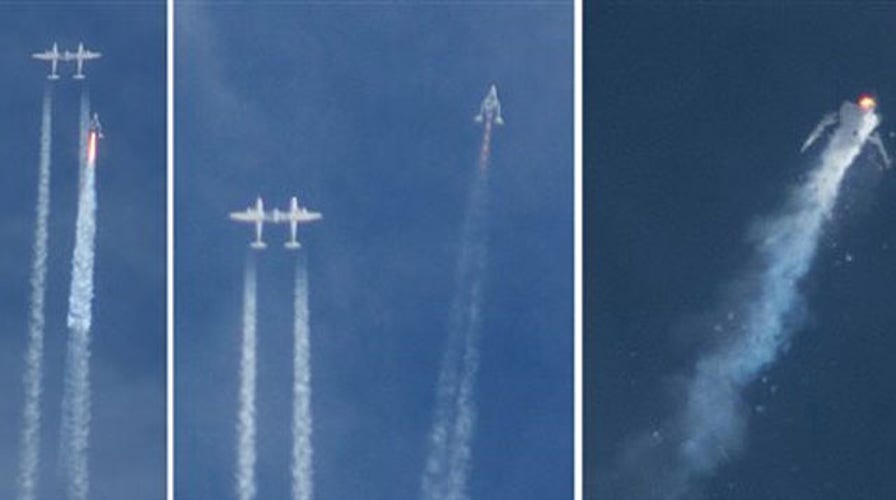New images show SpaceShipTwo breaking apart after ignition
Feds: Device used to slow craft's speed during descent deployed too soon
SpaceShipTwo’s “feathering” system deployed before the aircraft broke apart Friday leading to the death of the co-pilot, investigators say.
The system requires a two-step process to deploy. The co-pilot unlocked the system but Hart said the second step occurred "without being commanded."
The pilot parachuted to safety, but did suffer some injuries.
National Transportation Safety Board acting chairman Christopher Hart said the SpaceShipTwo's fuel tanks and engines showed no signs of being compromised.
The feathering is a feature unique to the craft to help it slow as it re-enters the atmosphere. After being unlocked, a lever rotates booms at the rear of the plane up to 90 degrees so they act as a rudder. After decelerating, the booms return to their normal position and the craft glides to Earth.
Hart said the feathers activated at Mach 1.0, the speed of sound, but shouldn't have deployed until it had at least reached a speed of Mach 1.4, or more than 1,000 mph.
The accident occurred just as it seemed commercial space flights were near, after a period of development that lasted far longer than hundreds of prospective passengers had expected.
Richard Branson, the founder of Virgin Galactic said Saturday that if they learn what went wrong-- and can overcome it-- the program will continue.
Branson, who was in Mojave, Calif., was asked at a press conference about the future of the program. He paused and said, "we would love to finish what we started some years ago."
Federal investigators also said Saturday that it may take up to a year to learn exactly what went wrong.
The Associated Press contributed to this report


